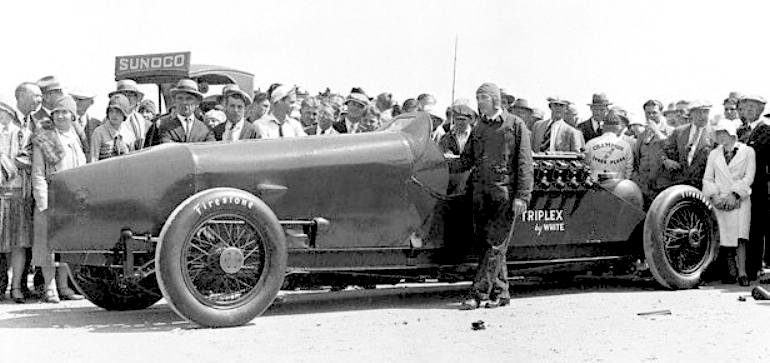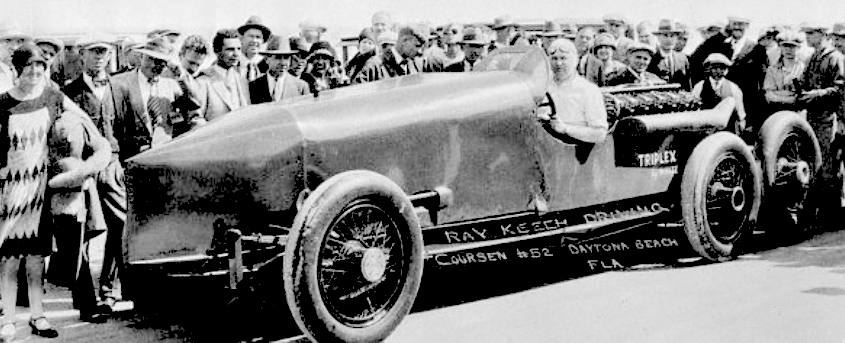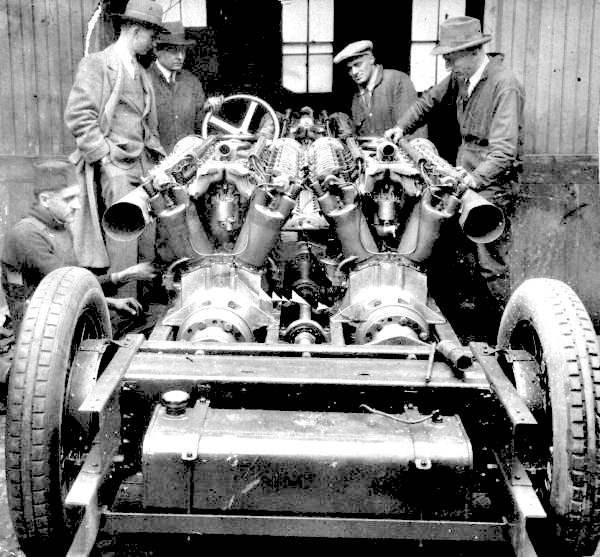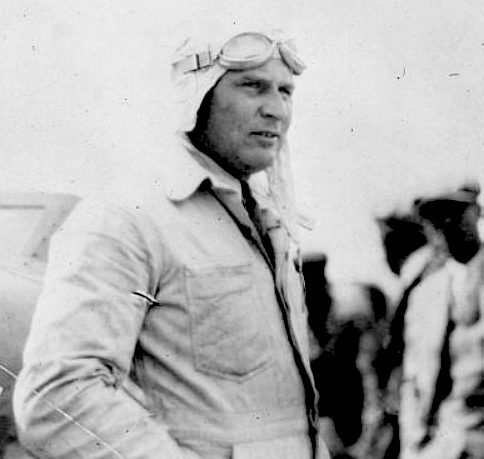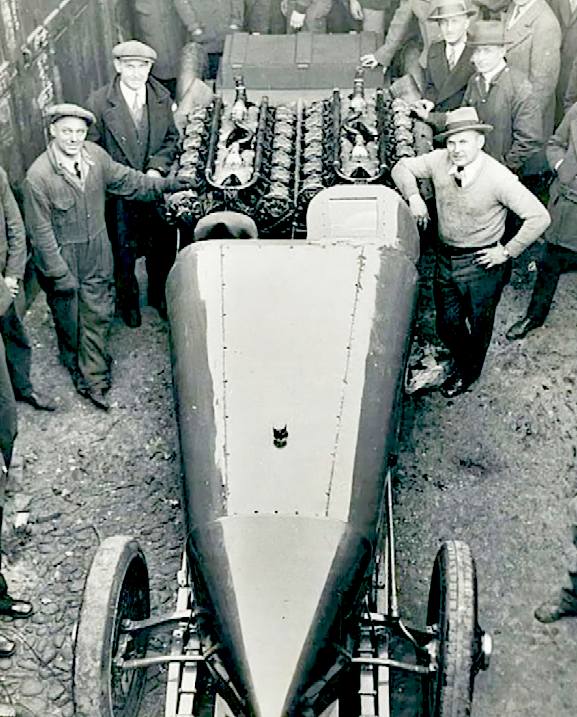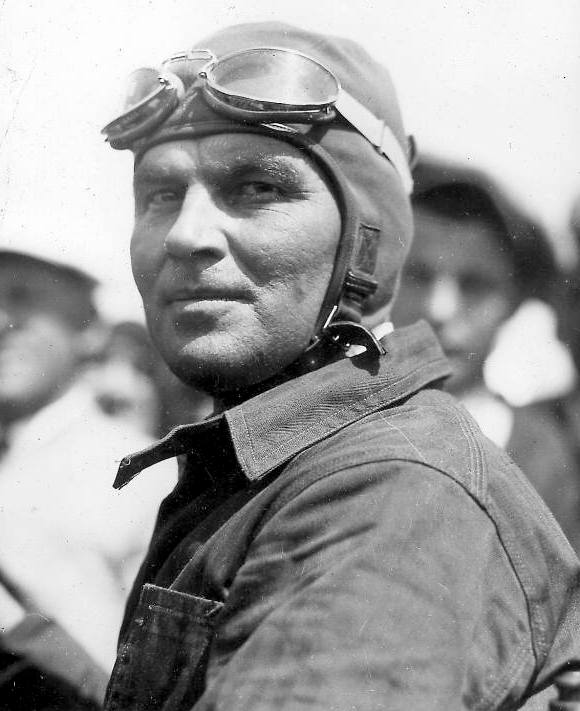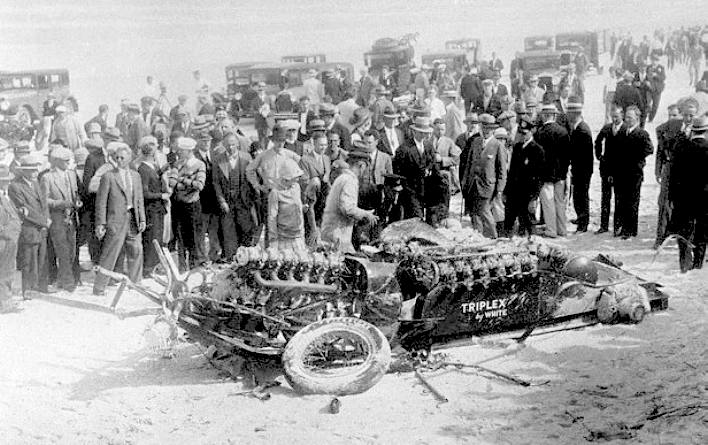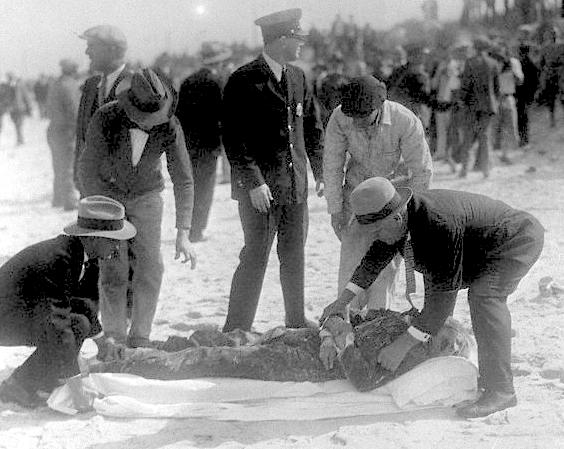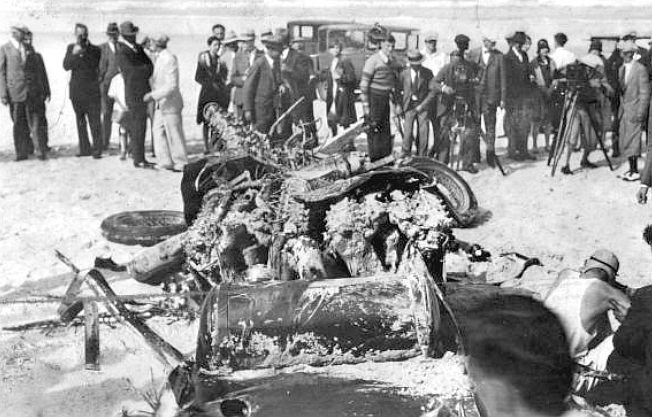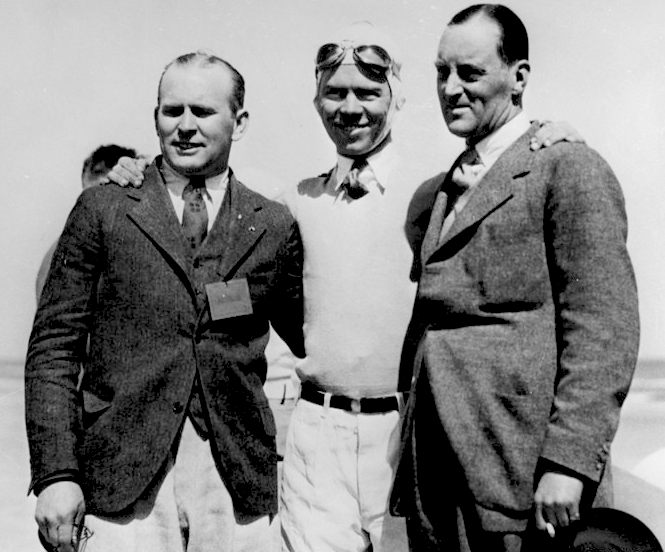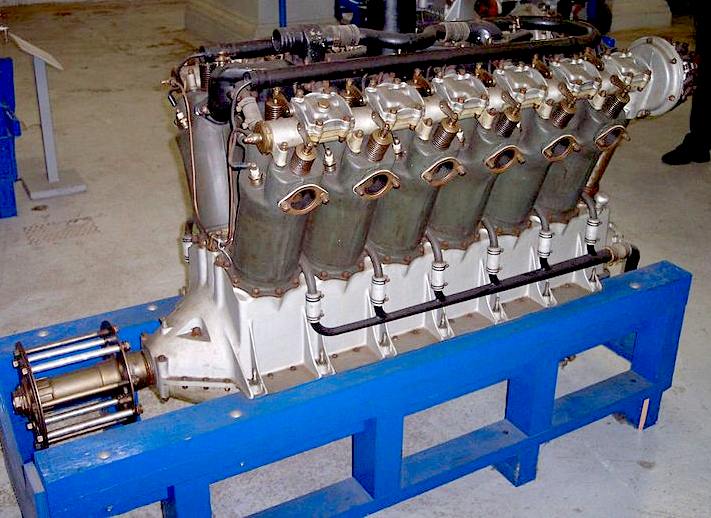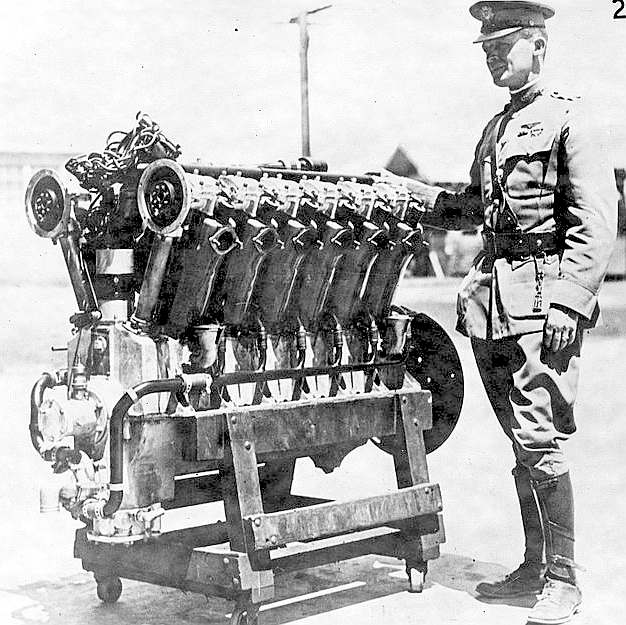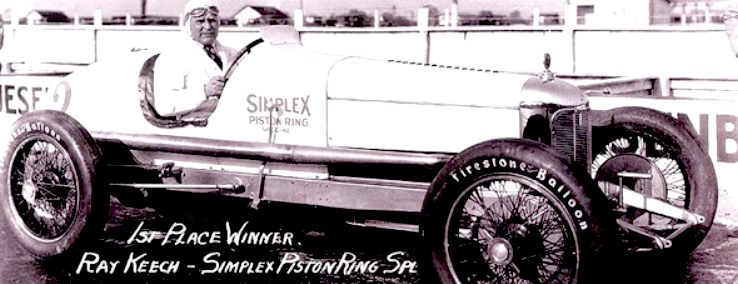|
WHITE TRIPLEX - LIBERTY LSR CAR
|
|||||||||||||||
|
J.W. White, famous American speed king, standing beside his Triplex machine which he will drive in an attempt to break the world’s automobile speed record
The White Triplex (also known as Triplex Special and Spirit of Elkdom) was a land speed record car built for J. H. White (Jim) and driven by Ray Keech. It was powered by three 27-litre Liberty aero-engines, for a total of 36 cylinders, 81 litre displacement and a claimed 1500 bhp.
A wealthy American, J. H. White of Philadelphia (unrelated to the White Motor Company), wanted to take the land speed record from the British, then shared in a duel between Henry Segrave and Malcolm Campbell. The White Triplex was born.
Circa 1928 — Ray Keech is shown here on the day that he broke the speed record at Daytona Beach, FL. In this image you can clearly see the extra rear axle that was added for record qualification purposes
No suitable engines were available to give a sufficient advantage over the British Napier Lion, so the simplest possible chassis was constructed and three war-surplus Liberty aero engines were squeezed into it. The vehicle was so simple it had no clutch or gearbox and only a single fixed ratio. Once started by a push start, it had to keep rolling. Driver comforts were minimal: the forward engine was sheathed in a crude attempt at streamlining, the two side-by-side behind were bare, with the driver perched between them.
White decided that no single engine would suffice to challenge the British Napier Lion. Taking a logical approach and using what was available he used a straight-forward and solid looking chassis, onto which three war-surplus 27-liter Liberty airplane engines were mounted – giving it a total of 36 cylinders, 81 liter displacement, and a staggering (at the time) 1,500 bhp in all.
An impressive looking bit of kit. With some refinement this could have been a safer car to drive. This could have been achieved with bodywork tapering to a tail, possibly including a tailfin - of course not generally well understood at the time.
Ray
Keech, an experienced Indianapolis racer, and imposing man with flaming red hair, was paid a handsome sum to drive the White Triplex in the first speed record attempt at Daytona Beach, FL. The first trial runs proved to be dangerous.
No man had ever been faced with so much power, and in such crude form. Keech suffered burns behind the wheel
on both runs – first from a burst radiator hose, then by exhaust flames from the front engine.
Ray Keech was an accomplished American racing driver
RAY KEECH
Charles Raymond Keech (born May 1, 1900 in Coatesville, Pennsylvania - June 15, 1929) was a board track and brick track racer in the 1920s. He is best remembered for winning the 1929 Indianapolis 500, and for setting a land speed record.
As
an established motor-racing driver, Ray Keech, was engaged to drive. First trial runs were hazardous, Keech being injured by burns during both: first from a burst radiator hose, then by exhaust flames from the front engine.
LEE BIBLE TRAGEDY
This record was raised to over 230 mph by Henry Segrave in Golden Arrow on March 11, 1929. Keech was asked by J. M. White to drive again, this time at Ormond Beach, and to re-break the record in the Triplex. Keech wisely declined, considering the car to be too dangerous. White then hired their team mechanic Lee Bible, a garage owner with no experience driving at these speeds.
Lee was born on a farm near Midway, Tennessee, on 26 May 1887. He was the son of William Bible. By 1920 he was living in Knoxville, Tennessee, with his family, and was working as an auto mechanic. Sometime later he moved to Daytona Beach; by 1929 Bible was said to be living in that town "for some time".
To Bible driving the Triplex was the opportunity of a lifetime, but many questioned his lack of experience behind the wheel of such a machine. Nevertheless, in practice runs Bible had done well enough to be declared eligible by officials for a record attempt.
The tragic death of Lee Bible and the wreck of the White Triplex reminds us of Parry Thomas and his death in Babs at Pendine Sands.
Henry
Segrave helped at the scene of Bible's accident. Segrave had made plans to attempt another run for the record because he believed that with better beach conditions he could reach 240 mi/h. But after the tragedy he changed his mind and turned his attention to the
water speed record, starting the "Miss England" venture. Henry Segrave lost his life at Lake Windermere, in England, fourteen months later, trying to better his own water speed record.
Three of the most famous drivers at the time: Ray Keech, Frank Lockhart and Malcolm Campbell - on the occasion of Frank testing his Stutz Black Hawk Special
LEE
BIBLE DETAILS
The Liberty V12 aircraft engine featured an overhead camshaft on each bank of 6 cylinders.
STATISTICS
Ray Keech in the race winning Simplex with Firestone tires and special piston rings
LINKS
http://selvedgeyard.com/tag/car/ White-triplex-triunfo-e-fim-tragico-do-monstro-dos-anos http://autoclassic.com.br/site/white-triplex-triunfo-e-fim-tragico-do-monstro-dos-anos-20/ White-triplex-three-engines-1500-hp-and-one-tragic-result http://www.nieworld.com/special/racing/thatwasthen7.htm http://selvedgeyard.com/2009/12/28/the-white-triplex-three-engines-1500-hp-and-one-tragic-result/ http://en.wikipedia.org/wiki/Ray_Keech http://www.thrustssc.com/thrustssc/History/Triplex.html Unique cars and parts world_land_speed_record http://www.uniquecarsandparts.com.au/world_land_speed_record_27.htm http://www.motorsportmemorial.org/focus.php?db=ct&n=1112 http://en.wikipedia.org/wiki/White_Triplex
|
|||||||||||||||
|
This website is Copyright © 2014 Bluebird Marine Systems Limited. The names Bluebird™, Bluefish™, Blueplanet BE3, Ecostar DC50™, Utopia Tristar™ and the blue bird and fish in flight logos are trademarks. All other trademarks are hereby acknowledged.
|
